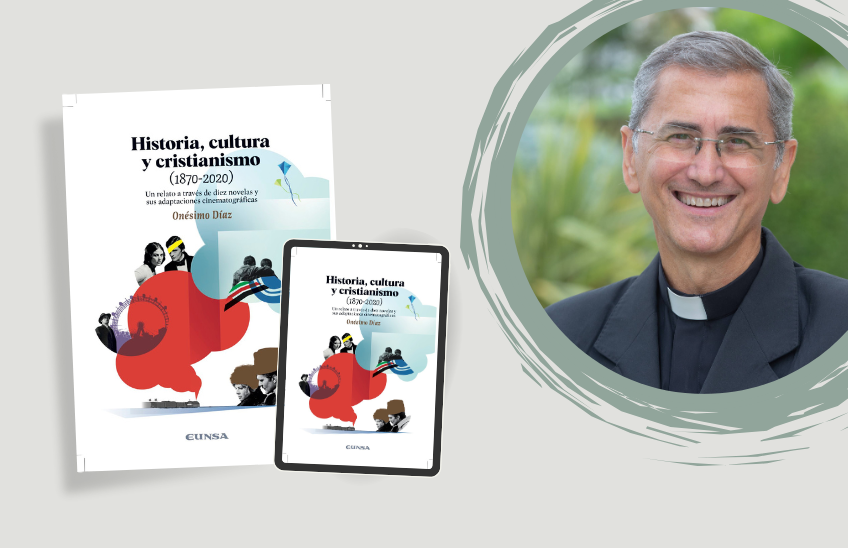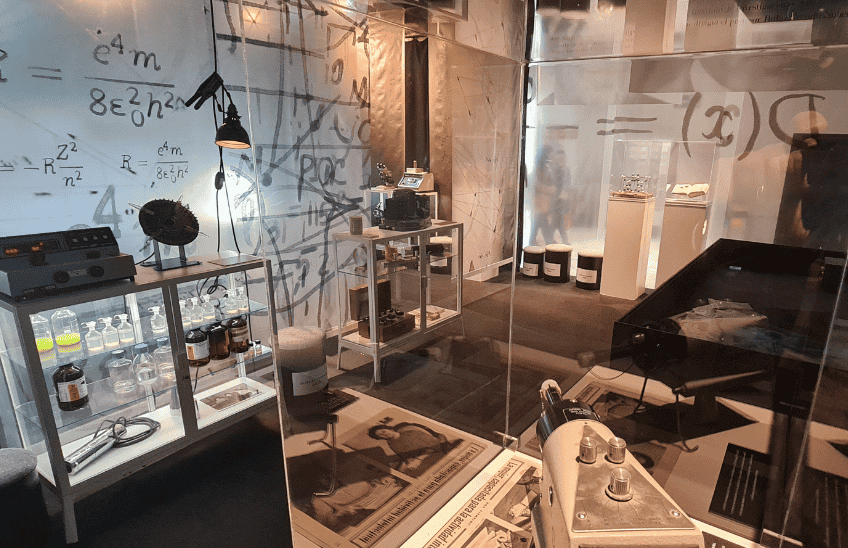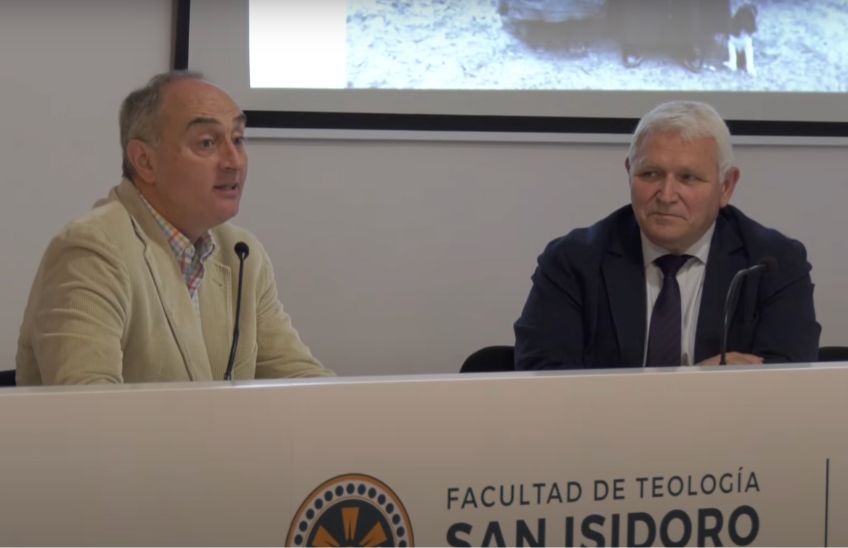The pioneers in the Río de la Plata
Historians Darío Casapiccola and Francesc Castells present a chronology of the beginnings of Opus Dei in Argentina, its protagonists and the first moments of the apostolate in Uruguay development .
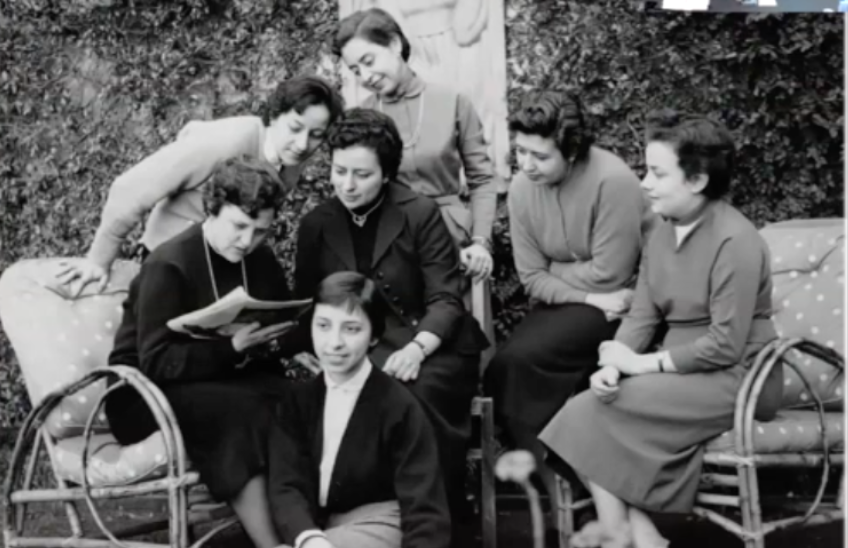
12 | 05 | 2023
The Center at programs of study Josemaría Escrivá interviewed historian Darío Casapiccola about his research on the beginnings of Opus Dei in Argentina and Uruguay, which was recently published as part of the book Gentes, escenarios y estrategias. Opus Dei during the pontificate of Pius XII, 1939-1958.
The chapter by Casapiccola and researcher Francesc Castells summarizes chronologically the first years of the apostolate of the Work, its protagonists and some of the projects developed between 1950, when the first members arrived in Rosario, and 1962, when the priest Emilio Bonell was appointed new Consiliary of the region.
As a whole, the book edited by Fernando Crovetto and Santiago Martínez Sánchez brings together the contributions of scholars of various nationalities who explore the history of the first expansion of Opus Dei in eleven European and American countries during the pontificate of Pius XII. These programs of study reveal the most outstanding aspects of the growth experienced by the Work in the years leading up to the Second Vatican Council.

Dario Casapiccola, historian.
The beginnings in Rosario
In March 1950, Ricardo Fernández Vallespín, a priest, and two university professors, Ismael Sánchez Bella and Francisco Ponz Piedrafita, arrived in the city of Rosario. They had the idea of making an exploratory trip to Argentina at the invitation of Cardinal Antonio Caggiano, Bishop of Rosario, who had asked the founder of Opus Dei to begin the Work in his diocese.
The three travelers expected to be there for about a month and a half. They made their base in Rosario and began touring different cities to get to know the country and the possibilities of starting an apostolic work. At that time it was common for academics visiting other countries to be invited to give lectures. In Argentina the Spanish academics enjoyed a certain prestige, which, according to Casapiccola, gave them "excellent possibilities for those first members of Opus Dei who arrived in the country to insert themselves in the cultural environment of the time and to pay for their expenses and travels". During the months of March and May 1950, the two academics and Ricardo Fernández Vallespín, who was not only a priest but also an architect, gave lectures at different universities in Tucumán, Córdoba, Mendoza, Buenos Aires, La Plata and Salta.
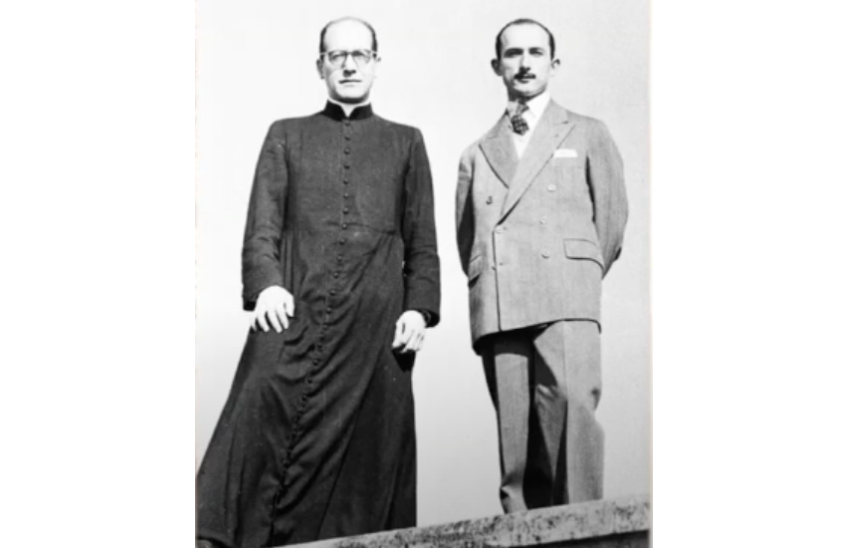
Ricardo Fernández Vallespín and Ismael Sánchez Bella.
However, the exploratory trip soon became definitive after Caggiano insisted to Escrivá that the three travelers stay. After St. Josemaría's approval , Ricardo Férnandez Vallespín and Ismael Sánchez Bella began preparations to begin the stable work of Opus Dei. The third traveler, Francisco Ponz, had to return to Spain because of his work.
According to Darío Casapiccola, "it is important to situate the arrival of the Work in Argentina in the framework of what was happening at that time within the institution. In those years Opus Dei obtained a pontifical approval as a Secular high school and had begun to expand to different countries". The founder understood "that the Work was an institution of universal character, so it was logical that the universal aspiration to be present all over the world should be realized".
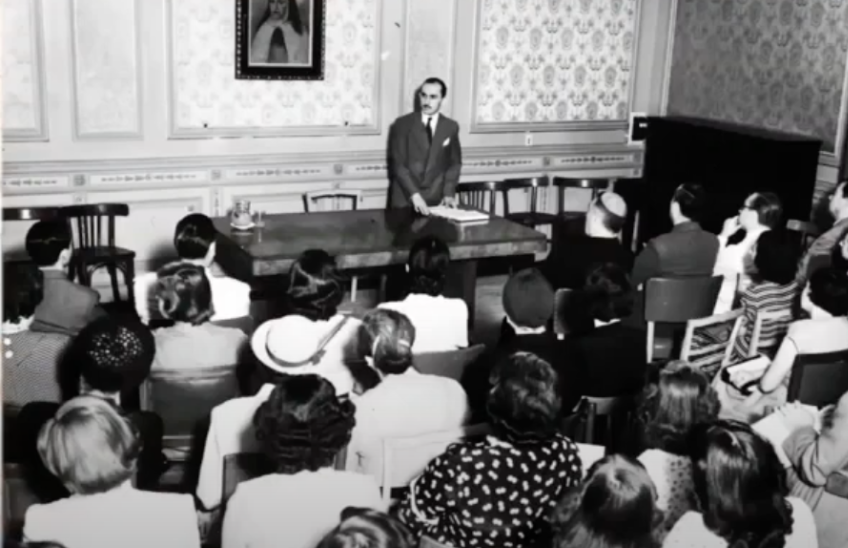
Ismael Sanchez Bella giving a lecture.
Catholicism in the 1950s
The Catholic Church in Argentina was at a very interesting moment. Casapiccola explains that at that time "it was going through a period of resurgence after a period of acute secularism, present in the second half of the 19th century in almost all Latin American countries".
According to researcher, "at the beginning of the 20th century the Church experienced a renewal that had numerous and varied manifestations: among some Catholic intellectuals, in the so-called workers' circles, also at the institutional level and, of course, in the field staff. This Catholic fervor had its maximum manifestation, in 1934, with the International Eucharistic congress held in Buenos Aires".
Within this context, Casapiccola points out that "a very important element was the Catholic Action created in 1931 in Argentina, promoted by Caggiano, which managed to meet the spiritual concerns of the laity, especially of a large sector of the thriving class average . The new institution in its maximum splendor gathered approximately 70,000 members".
Friendships and support
Cardinal Caggiano not only encouraged the arrival of Opus Dei in Rosario but also maintained a very good relationship with its members. In particular, Casapiccola points out, "with the priest Ricardo Fernández Vallespín, who lived for several weeks in the Bishopric and whom Caggiano named advisor of the Catholic Action Architects Center and member of the committee organizer of the National Eucharistic congress , celebrated in Rosario in October 1950". The partnership of Fernández Vallespín and, later of the priest Ignacio Echeverría, in the activities of Catholic Action at order of Caggiano, "facilitated contacts with young people and professionals, men and women, who eventually participated in the activities organized by members of Opus Dei" such as talks on Christian training and monthly retreats.
To the newcomers Caggiano introduced them to friends and people so that they could insert themselves into local society. Among them, he put them in touch with the owner of a house that they were able to rent to start a university residency program .
Little by little the pioneers expanded their social network in Rosario and Buenos Aires. Some letters from presentation that they brought from Spain helped them to establish a first contact. As the historian points out, "this was the case of businessman Ángel García, owner of an important store called La Favorita. Soon his nephews and their respective families became involved in organized apostolic activities".
Friendships arose in the professional field, of course. For example, Ismael Sánchez Bella got in touch with intellectual colleagues from different sectors of the Humanities: "Ricardo Levene, Ricardo Zorraquín Becú, Eduardo Martiré and Víctor Tau Anzoátegui", says Casapiccola. He also befriended the young students who began to frequent the university residency program .
In Buenos Aires they had the support of a couple of Spanish supernumeraries, José Ferrer and Carmen Millet, who lived in Argentina between 1951 and 1957. According to Casapiccola "their presence resulted core topic to establish professional and social relations in an environment different from the one that until that moment Fernández Vallespín and Sánchez Bella had reached".
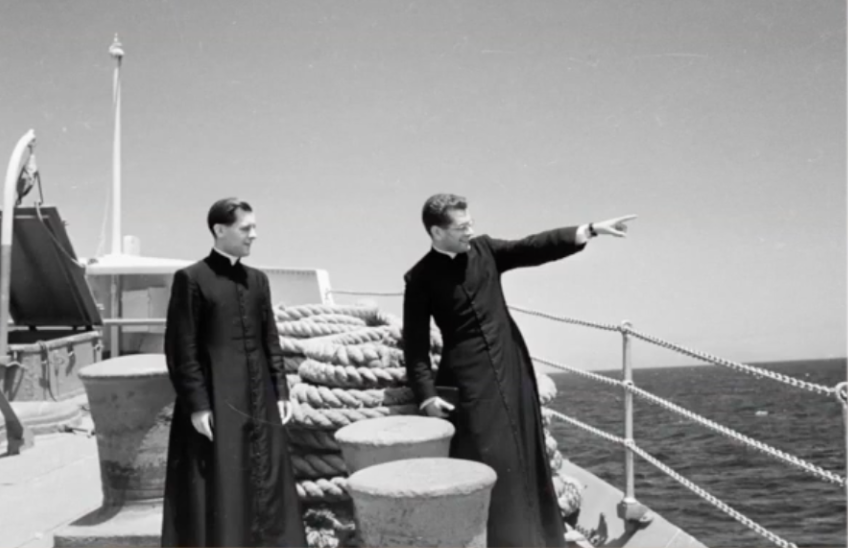
Agustín Falceto and Gonzalo Bueno.
Across the Rio de la Plata
The work in Rosario was slowly taking its first steps. The arrival in 1952 of Sabina Alandes opened a new feminine chapter in the history of Opus Dei's beginnings in Argentina. By the middle of the decade the message of the Work had caught on among men and women in Rosario first, and in Buenos Aires a little later.
By then Ricardo Fernández Vallespín had begun to make periodic trips to Uruguay which, in religious terms," Casapiccola explains, "was at that time a country with a secularist tinge and in which there had been a certain hostility towards the Catholic Church. In spite of this, Catholics were very strong, with a strong presence of schools and confessional associations".
In addition to the trips of the Spanish priest to Uruguay, some numeraries from Buenos Aires traveled frequently to attend spiritually to an Uruguayan supernumerary who some years before had known the Work in Chile and then had returned to Montevideo. There they began to organize monthly retreats, preached by Ricardo Férnandez Vallepín, which were attended by a handful of women, some of whom later requested Admissions Office to join Opus Dei.
Soon Josemaría Escrivá sent reinforcements from Spain so that centers could be opened in Montevideo. In October 1956 two young priests arrived: Agustín Falceto and Gonzalo Bueno, who, Casapiccola says, "began their apostolic work based on the people previously known to Fernández Vallespín, and new friendships they made. In the following months some numeraries arrived who "gave a good impulse to the apostolate among men and women".
The initial encouragement of that handful of men and women during the long decade studied by Casapiccola and Castells (1950-1962) was core topic for Opus Dei to take root on both sides of the Rio de la Plata. From Rome, Josemaría Escrivá, "although he asked a lot of these first ones, also encouraged them, took care of them, was attentive to each one, and they knew that they were in the founder's head and heart. Those first ones who came to start Opus Dei were a generation of steel, ready to carry the Work forward in Argentina and in any part of the world," Casapiccola concludes.

